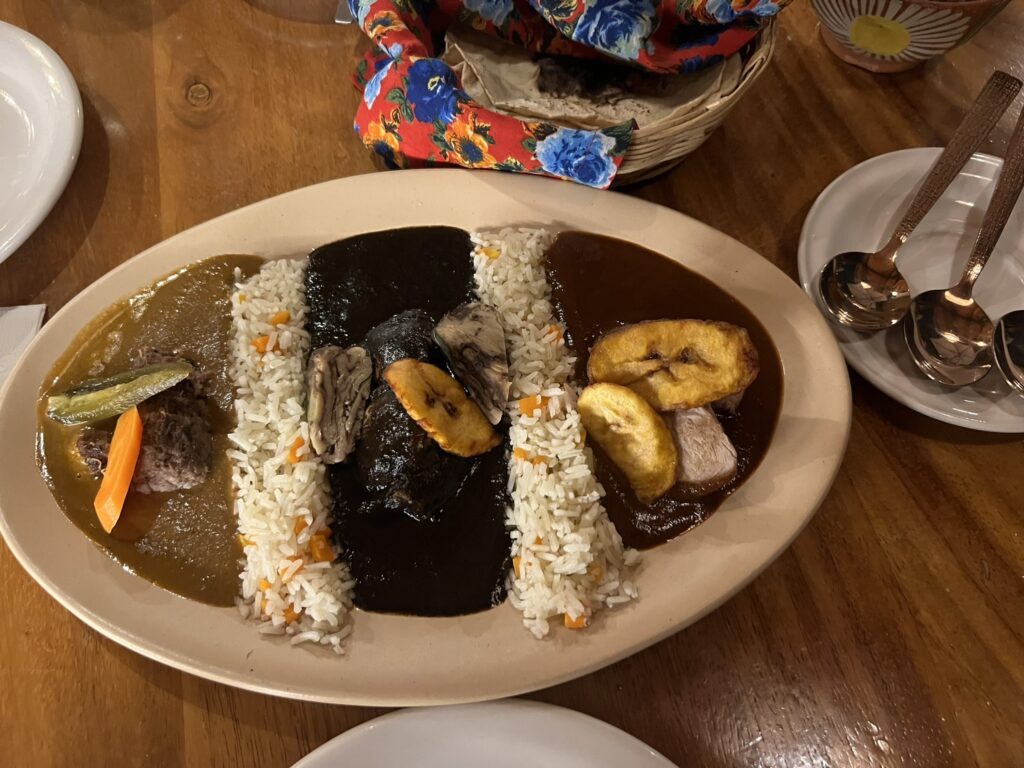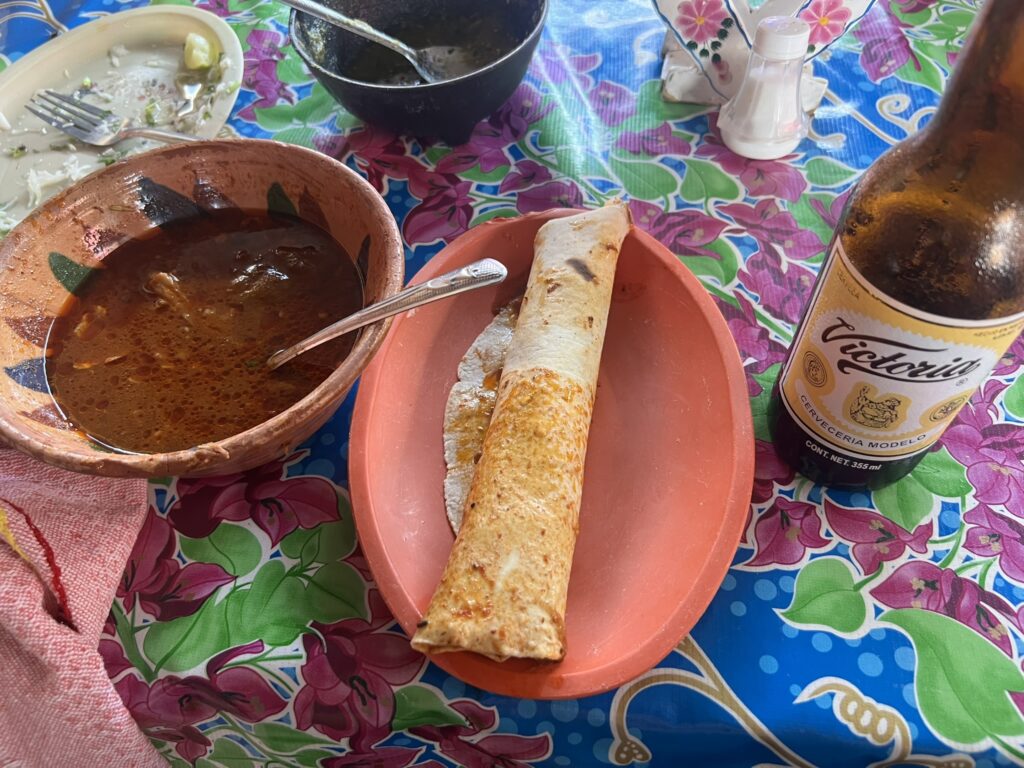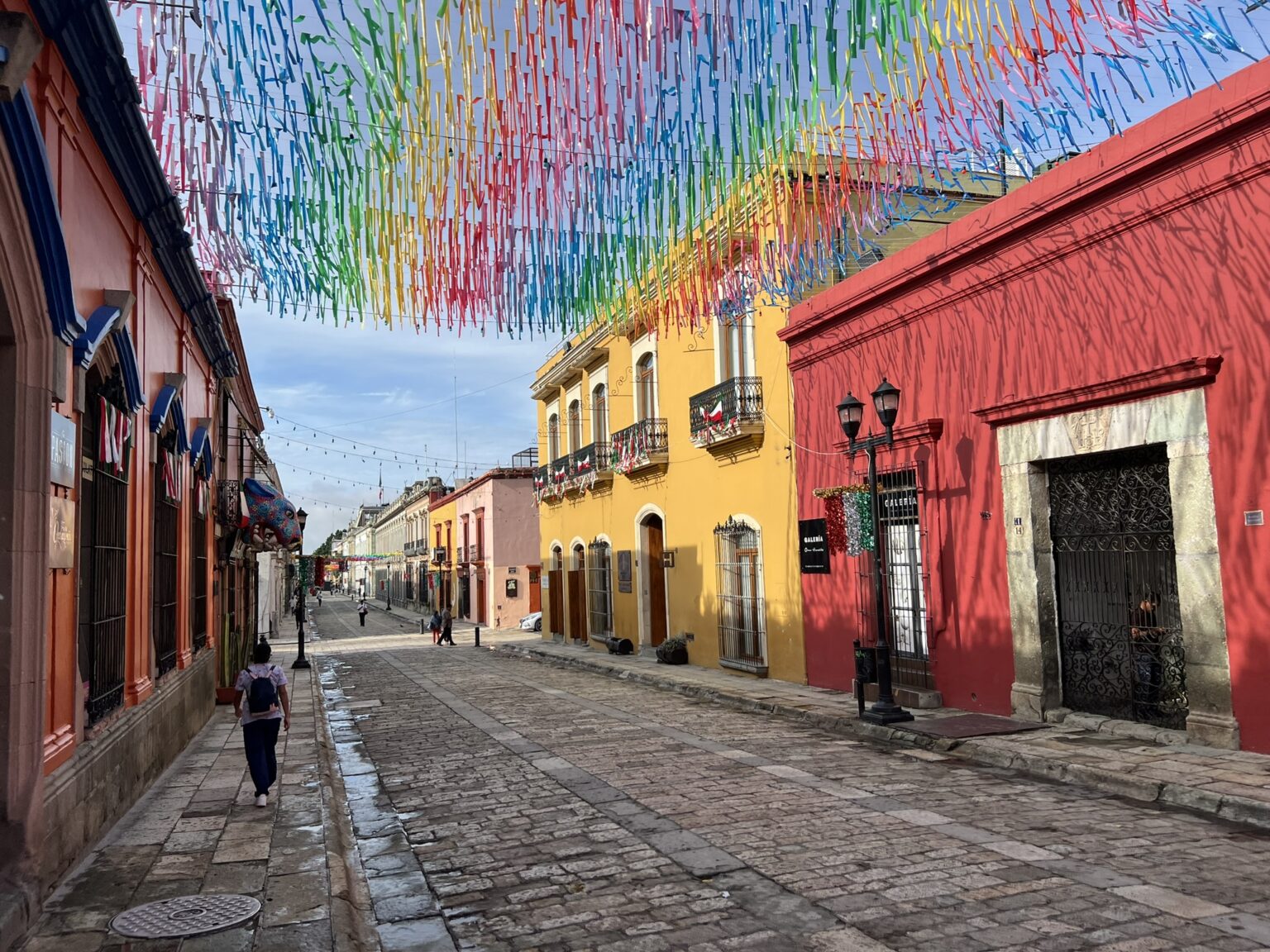Oaxaca de Juarez is located in the south of Mexico and is famous for its Dia de Muertos (Day of the Dead) celebration. We visited Zapotec ruins, learned about the culture, and tried delicious food in Oaxaca during our stay.
Best Thing I Ate This Week
Paquete 1 at Pasillo de Humo in Oaxaca
There are many local markets in and around Oaxaca de Juárez that are great for trying the traditional regional food. One of the oldest and biggest markets is located in the nearby town of Tlacolula called Mercado Martin Gonzalez and on Sundays people travel there from all around to sell or buy regional goods. Another massive market is located in the city of Oaxaca de Juárez and is called Mercado de Abastos, which sells everything and anything that someone would need. However, the easiest market to visit for tourists to try traditional food is the Mercado 20 de Noviembre because of its location in the center of Oaxaca. At this market, there are numerous Oaxacan restaurants serving moles, tlayudas, memelas, tamales, and much more. Additionally, there are many panaderias that sell delicious baked goods. The area within the market that I found most impressive was the Pasillo de Humo (hallway of smoke).
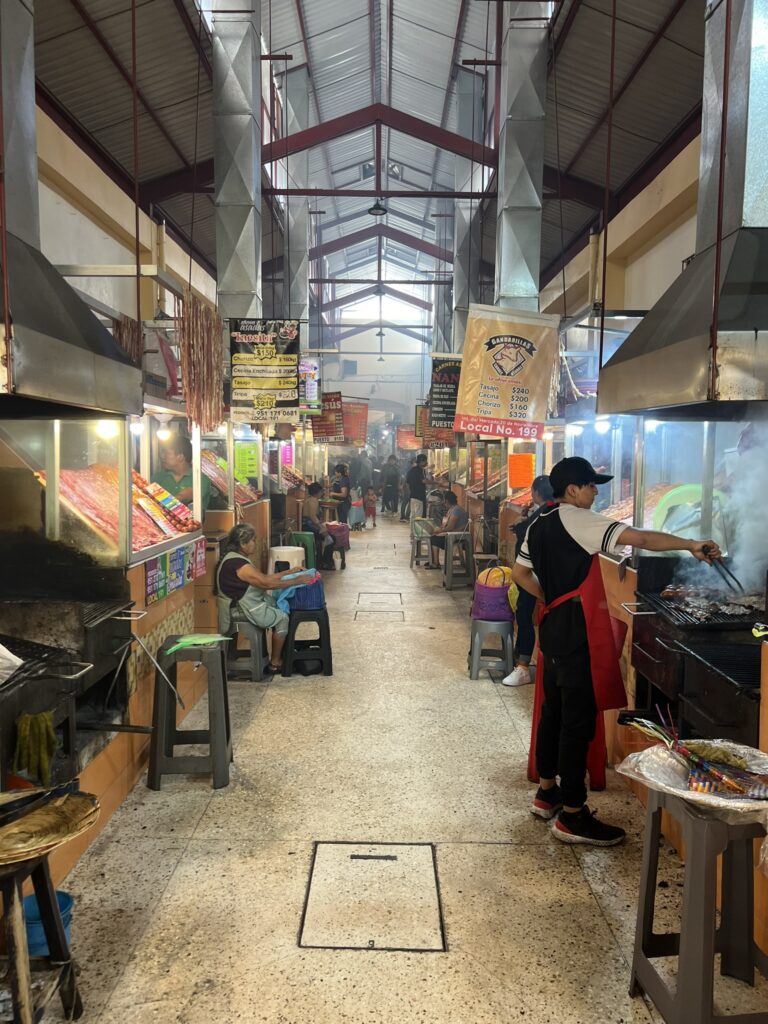
When entering the Pasillo de Humo, you immediately see why it was given this name, because there is smoke rising from the grills that line the entire hallway on both sides. If you are entering from the main part of the market, there is a large seating area that is normally bustling with people enjoying the delicious cooked meat from one of the stalls. You are given a basket that allows you to go to one of the stalls to select the meats that they will then cook for you. You can then return to the seating area with your meats in the basket to select any of the sides that you would like to accompany your meat. We walked from one end of the hallway to the other, and many vendors aggressively yelled at us to buy from them. It was difficult to see any difference between the stalls because the meat and prices they sold seemed to be the same. Towards the end of the corridor, we stopped at one vendor named Carnes Asadas Lety that was not very pushy. It turned out that they also had a small sitting area behind their grill, which offered the same accompaniments as the other busy seating area.
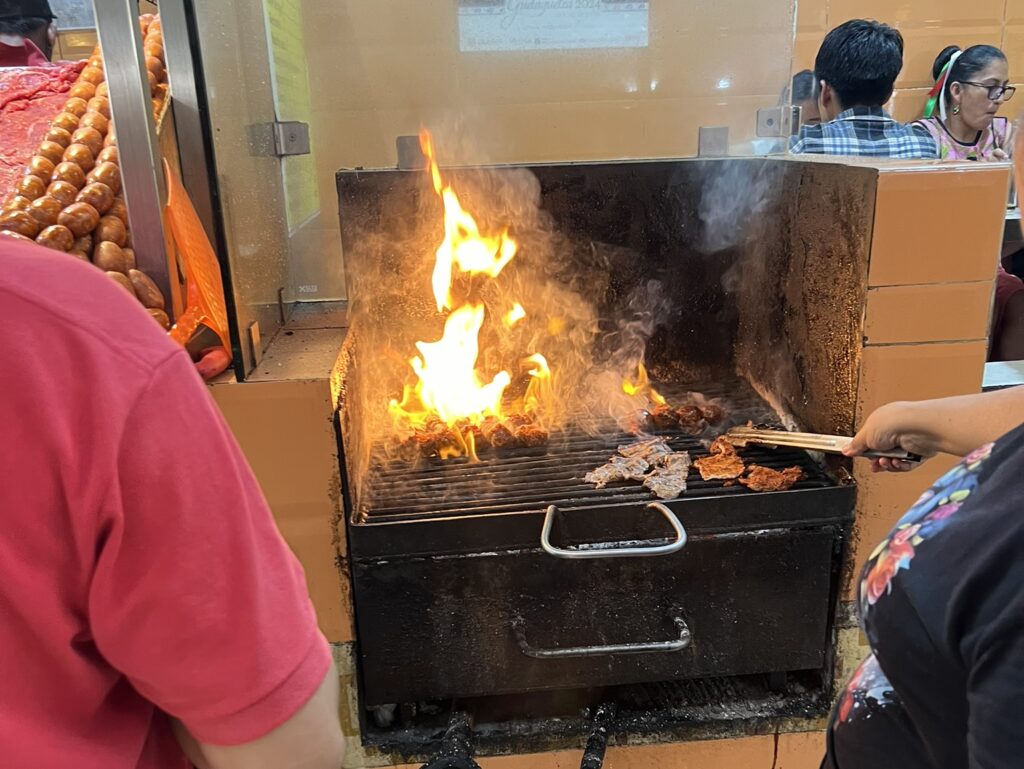
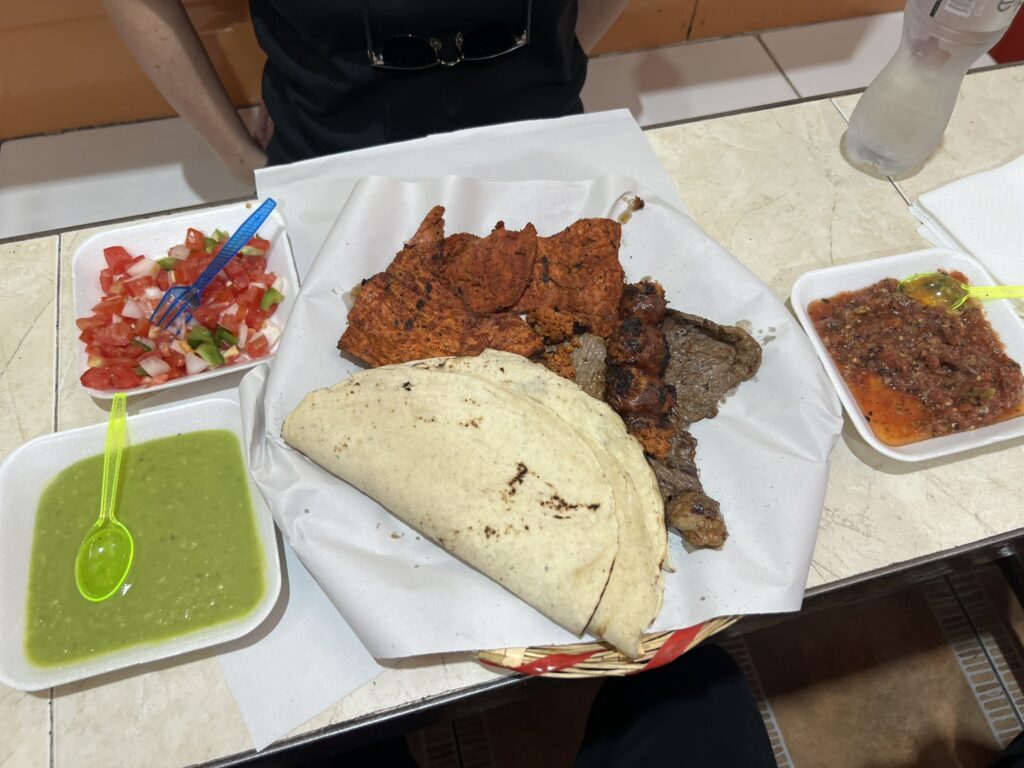
There were 8 paquetes (packages) that sold the most popular meats in various quantities. We ordered the smallest, which was paquete 1 and included 1/4 kg tasajo (beef), 1/4 kg chorizo (sausage), 1/4 kg cecina (beef), and tortillas. Additionally, we selected pico de gallo, salsa verde, and salsa roja as our accompaniments. Overall we found this quantity of food to be a great amount for 2 people. All of the meat was incredibly delicious and the pico de gallo and salsa verde were a wonderful complement to the meat in the tortilla. If I had to pick one meat as my favorite, it would be the chorizo; the flavors were a bit spicy, delicious, and unlike other tacos I had tried so far.
An Interesting Fact I Learned
The best mezcal (aguardiente de agave) comes from small Oaxacan family distillers
The alcohol most international people associate with Mexico is tequila. What many people may not know is that tequila is part of a broader family of liquor made in Mexico from the fermentation and distillation of the juice in agave plants. This liquor is called aguardiente de agave and is generally referred to as mezcal. In order to be called tequila a specific blue agave plant must be used for the fermentation process. While tequila has grown to be a huge market around the world, most people in Mexico drink the broader category of mezcal rather than the specific one made with blue agave.
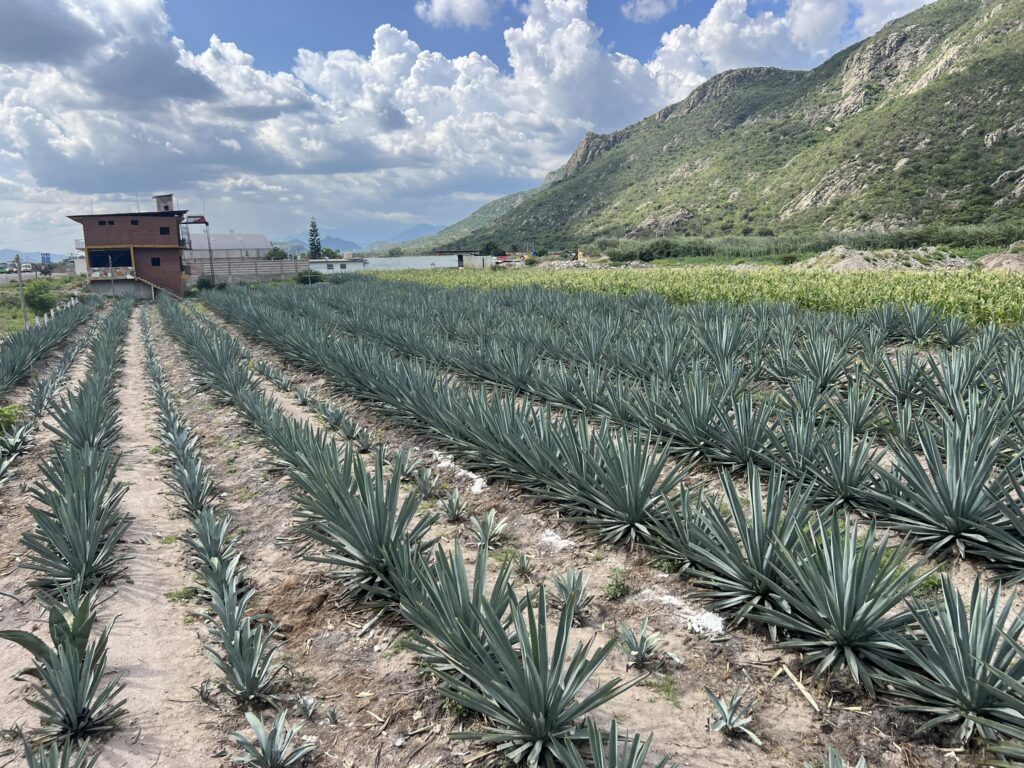
When researching the Oaxaca region, we learned that it was known for its artisanal mezcal producers. There were opportunities to visit the palenques (mezcal distilleries) in the areas surrounding Oaxaca de Juarez and also go to bars in the city that select the finest mezcal from nearby producers. We took advantage of both options during our visit, which allowed us to learn much more about the mezcal production and consumption.
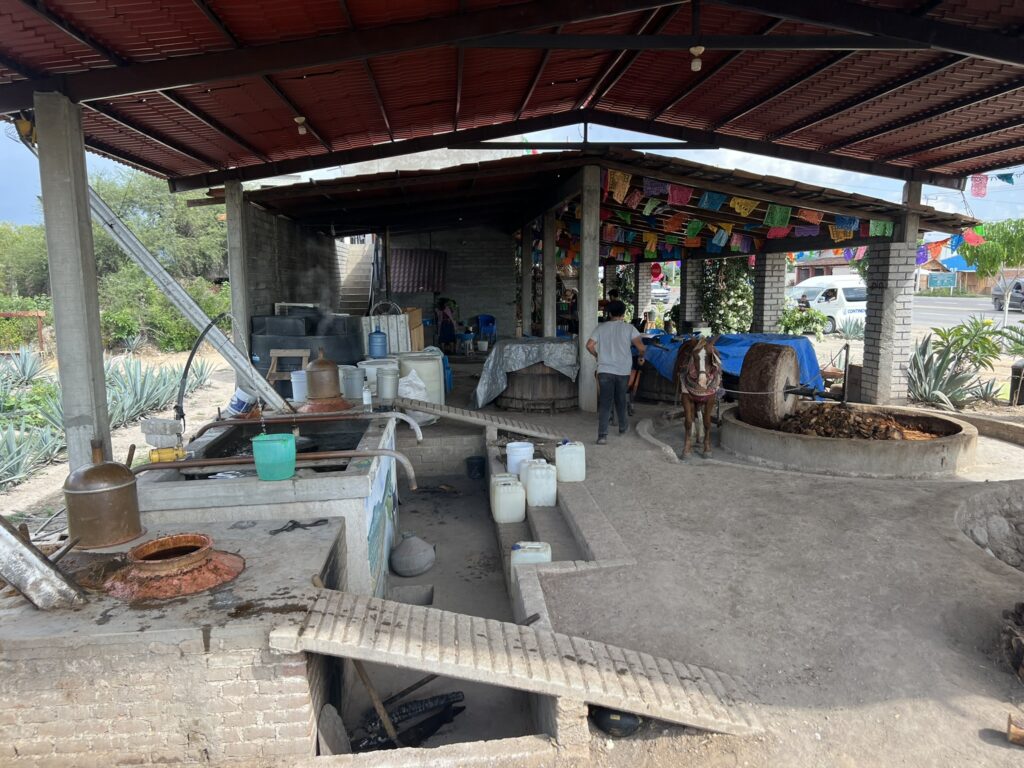
Our first informational experience about mezcal was at a small family run palenque (Casa de los Mezcales Bita) outside of the town of Santiago Matalan. We received a tour around the production facility by the owner while his son was working on the distillation process. We saw the fields where agave is cultivated and learned that distillers can grow agave on site or buy it from other farmers. Additionally, the biggest differentiator in the type of agave is if it is grown on a farm or wild. Many people claim that wild agave has a richer flavor. Lastly, we learned about how the distillation process results in different flavor profiles for the mezcals. There was even a tasting of various different bottles distilled on the property and an explanation of what made them unique. One that stood out to us was called Mezcal Pechuga. During the important Dia de los Muertos celebration, many ofrendas (offerings) are left on the altars of loved ones who passed away, including a lot of nice food (similar to a Thanksgiving meal in the United States). After the celebration, rather than let leftovers go to waste, the food, including the turkey, are leveraged for a special distilling process that creates the incredibly delicious Mezcal Pechuga.
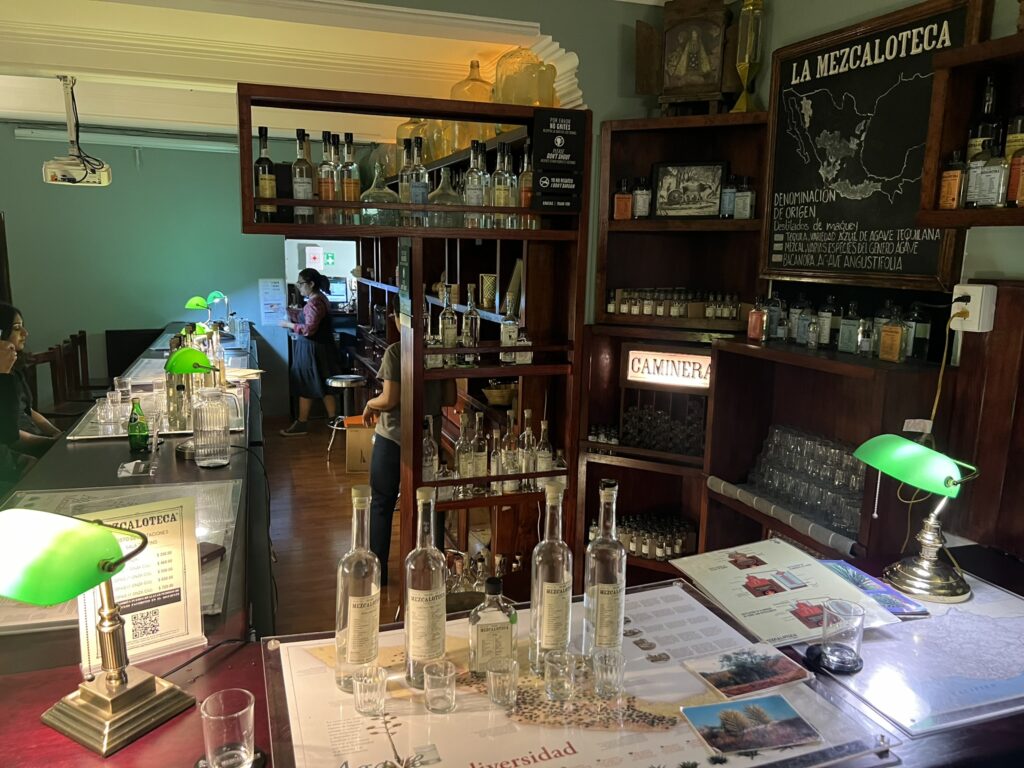
Our second informational experience about mezcal was at a bar called Mezcaloteca located in the center of Oaxaca de Juarez. They offer options to do tastings of between 1 to 5 cups of mezcal guided by an expert in the spirit. We chose to split a 5 cup tasting to enhance our knowledge that we had learned at the palenque. We received a tasting booklet and instructions on how we could identify the variations of mezcal flavors. Also, there were diagrams of the 3 primary equipment setups used to distill mezcal and a map depicting where all the different types of the agave plants grow throughout Mexico. By the end, we learned that many internationally sold mezcals are produced using wooden casks to give a smokey taste that fits the taste preferences of those countries. However, the most popular and greatest consumed mezcals in Mexico don’t have a smokey taste at all. They come from small local producers like those found around Oaxaca and are best consumed by sipping in small glasses without mixers.
My Travel Tip of the Week
Visit Monte Alban with a bus and be sure to hire a guide
Monte Alban is located about 30 minutes from the Zocalo (central plaza) of Oaxaca de Juárez. There are many companies that offer a tour guide and transportation from the city center. We wanted to go independently and decided to book a round trip bus transportation from the city and go without a guide. Our bus was the first of the day, leaving at 8:30am and arriving at the parking lot of the archeological site around 9am, right as it opened for the day. While our initial plan was to walk around the ruins by ourselves, we were approached by a local guide (Juan) who offered us a tour in English or Spanish to provide additional context to the highlights of the historical site. There were 4 others entering at the same time as us, and we all decided to take Juan’s tour.
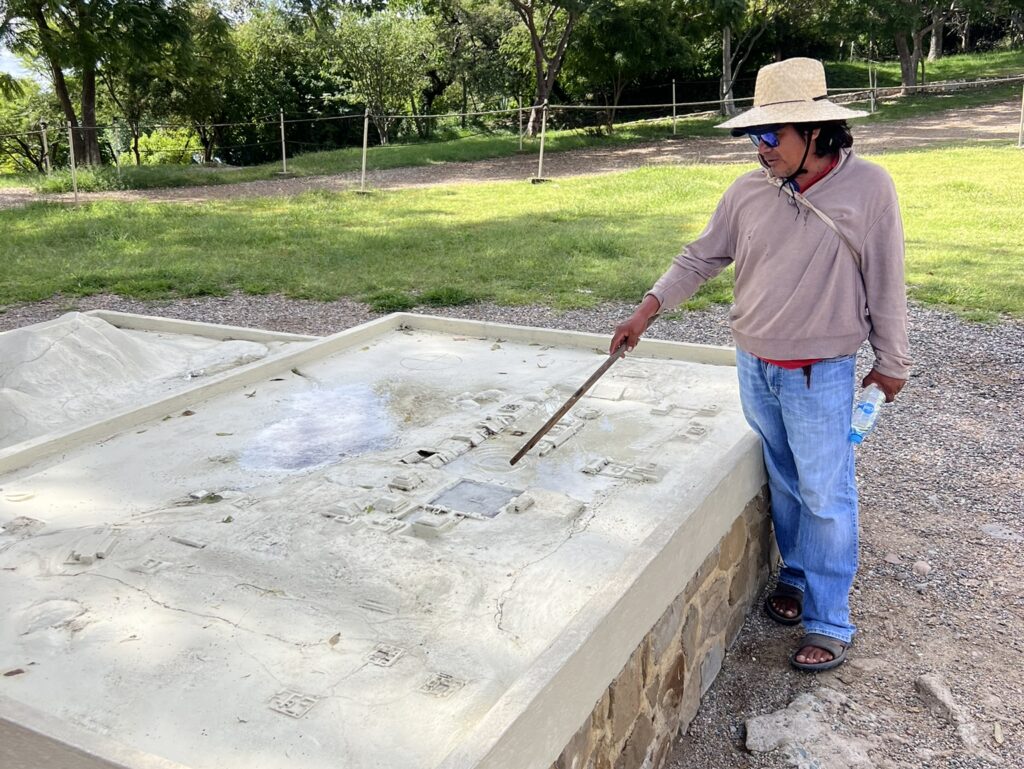
It ended up being a great decision to go on his tour because Juan’s historical knowledge and personal opinions made for a much more valuable experience. If you drive to the ruins or don’t book a guide with a tour company, I would highly recommend taking a tour with Juan (or another guide at the entrance) to get the most out of your visit to Monte Alban.
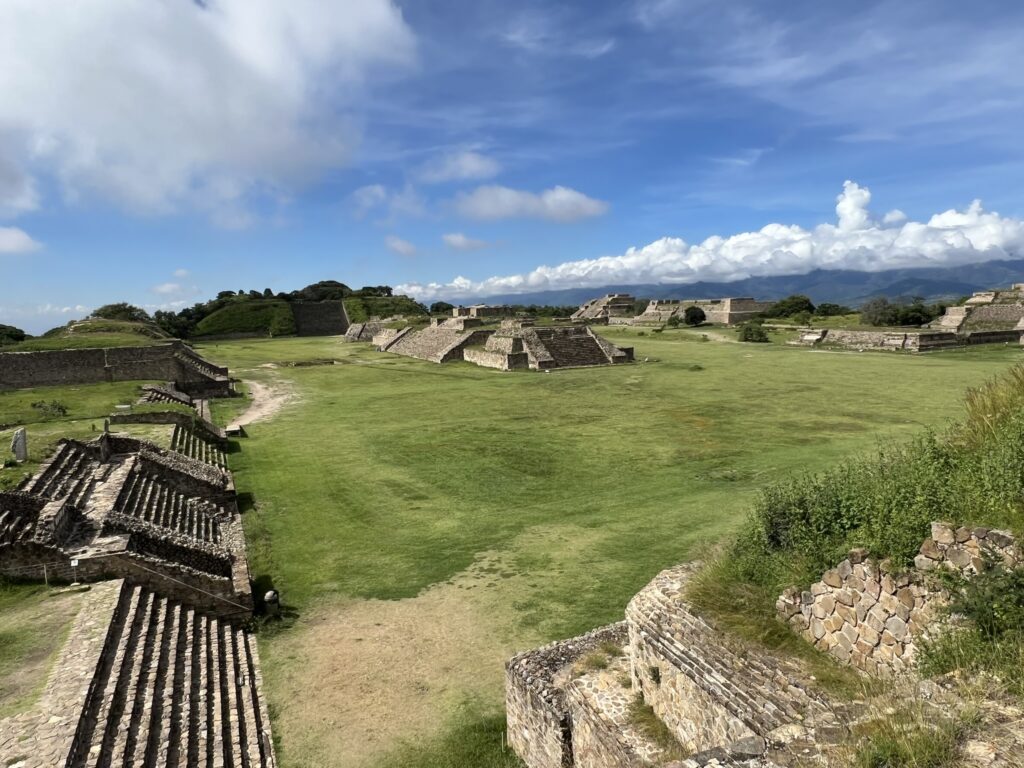
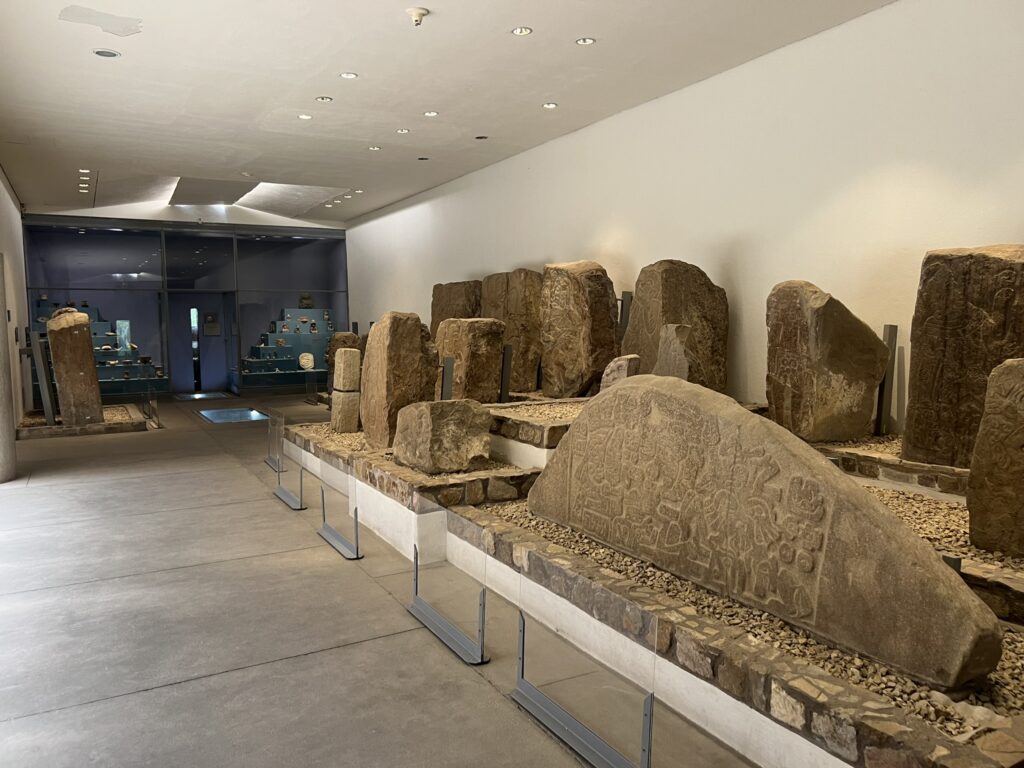
During our 1 hour walk around the site, we learned that people inhabited the space for nearly 1,000 years. It was thought to be established around 500 BC and was abandoned sometime around 500 AD. In between, it served as the most important site for the Zapotec civilization and was one of the earliest cities of Mesoamerica. The site was built on top of a hill that overlooks the valleys below. Within the site the main area was leveled out and the construction of the buildings was made with such precision that when you stand at ground level all you can see are clouds all around you which makes it appear like the city floats in the sky. Juan told us that, in the evening, it feels like you are surrounded by stars in all directions and well worth a return visit. Lastly, we learned about the important ball court and ceremonial buildings used throughout the site. The Zapotecs had a mastery of acoustics, astrology, and knew how to move water around the site. While it would have been impressive to walk around Monte Alban alone, going with Juan and learning these insights (and much more) made it an even better trip.
My Additional Anecdote This Week
Oaxaca’s culinary scene is diverse and delicious
In addition to Oaxaca’s reputation for producing some of the best mezcal in Mexico, it is known for having some of the best food in Mexico. Initially, we assumed that the best dining destinations would be found at restaurants near the center of the city. However, after talking to locals, we learned that the best food is found at the markets or at the street vendors. We also learned that the reason the food is so delicious is because of the strong and diverse native Mexican populations that live in the state of Oaxaca. There are 16 overarching indigenous groups, many of whom have their own customs and traditions. Besides Dia de los Muertos, the second most famous festival in Oaxaca is Guelaguetza where these 16 groups come from all over the state to celebrate their cultures.
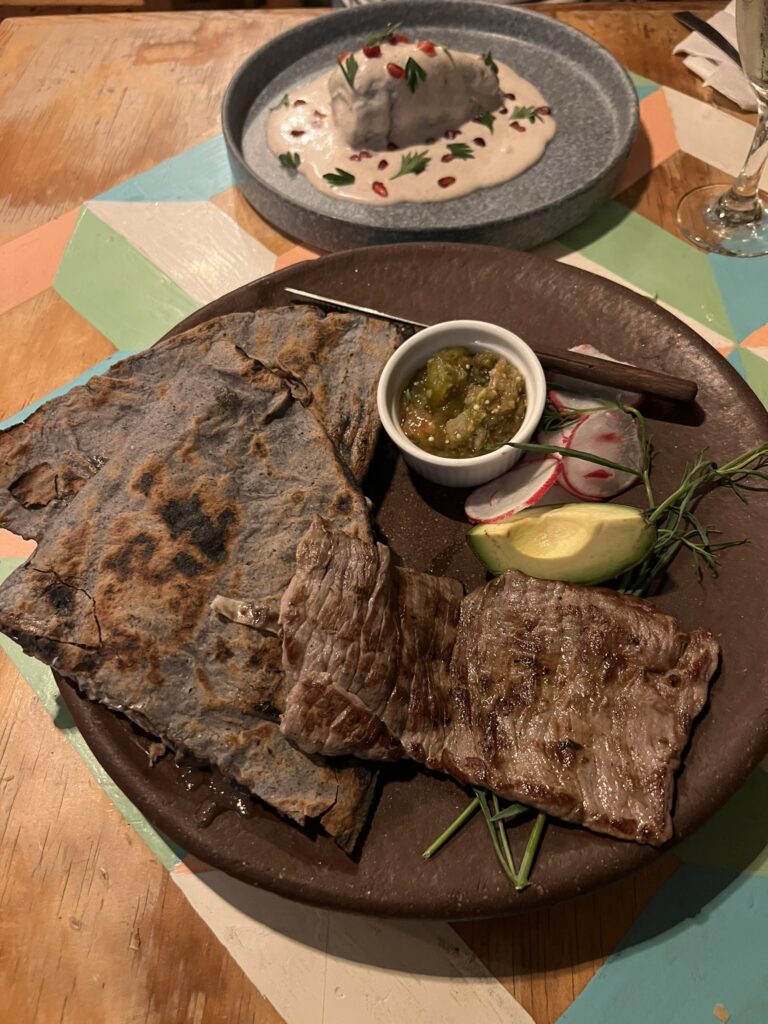
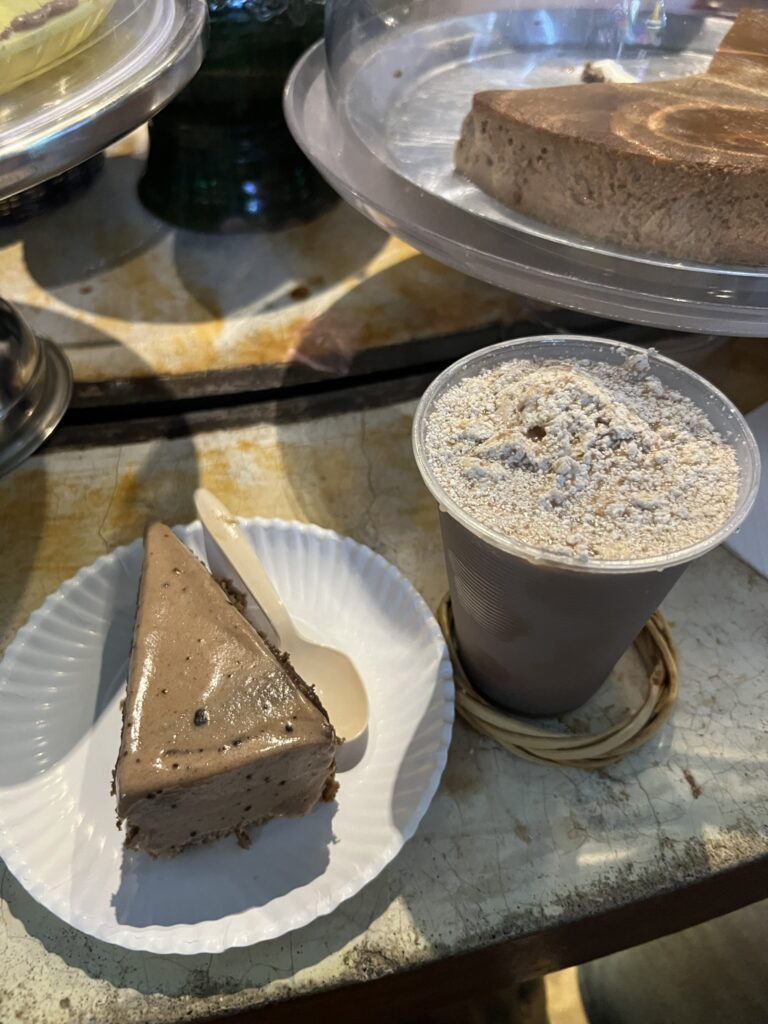
During our time in Oaxaca we were able to try food from many street vendors, markets, and a handful of restaurants. A list of the local dishes that stood out to us include:
- Casa Taviche: Chile En Nogada
- La Terraza del Copal: Guacamole con Chapulines
- Empanadas del Carmen: Empanada de Amarillo
- La Flor de Huayapam at Mercado Benito Juárez: Tejate
- Panaderia Miguel Hidalgo 404: Dona de Lechecilla
- Carnes Asadas Lety at Mercado 20 de Noviembre: Tasajo, Chorizo, Cecina
- El Sabor de Cecy: Memela con Costilla
- Las Quince Letras: Trilogia de Moles- Negro, Coloradito, Estofado de Almendras
- Panaderia Tradicional Yazmin: Temal con Mole Negro
- Barbacoa Elenita at Mercado Tlacolula: Exquisito Consome y Borrego Taco
- Tlayudas Cele at Mercado Municipal Martín González: Tlayuda con Tasajo
- La Original Cangre Burger: Cangre Burger
- Lechoncito de Oro: Tacos de Lechón con pierna y con chicharron
